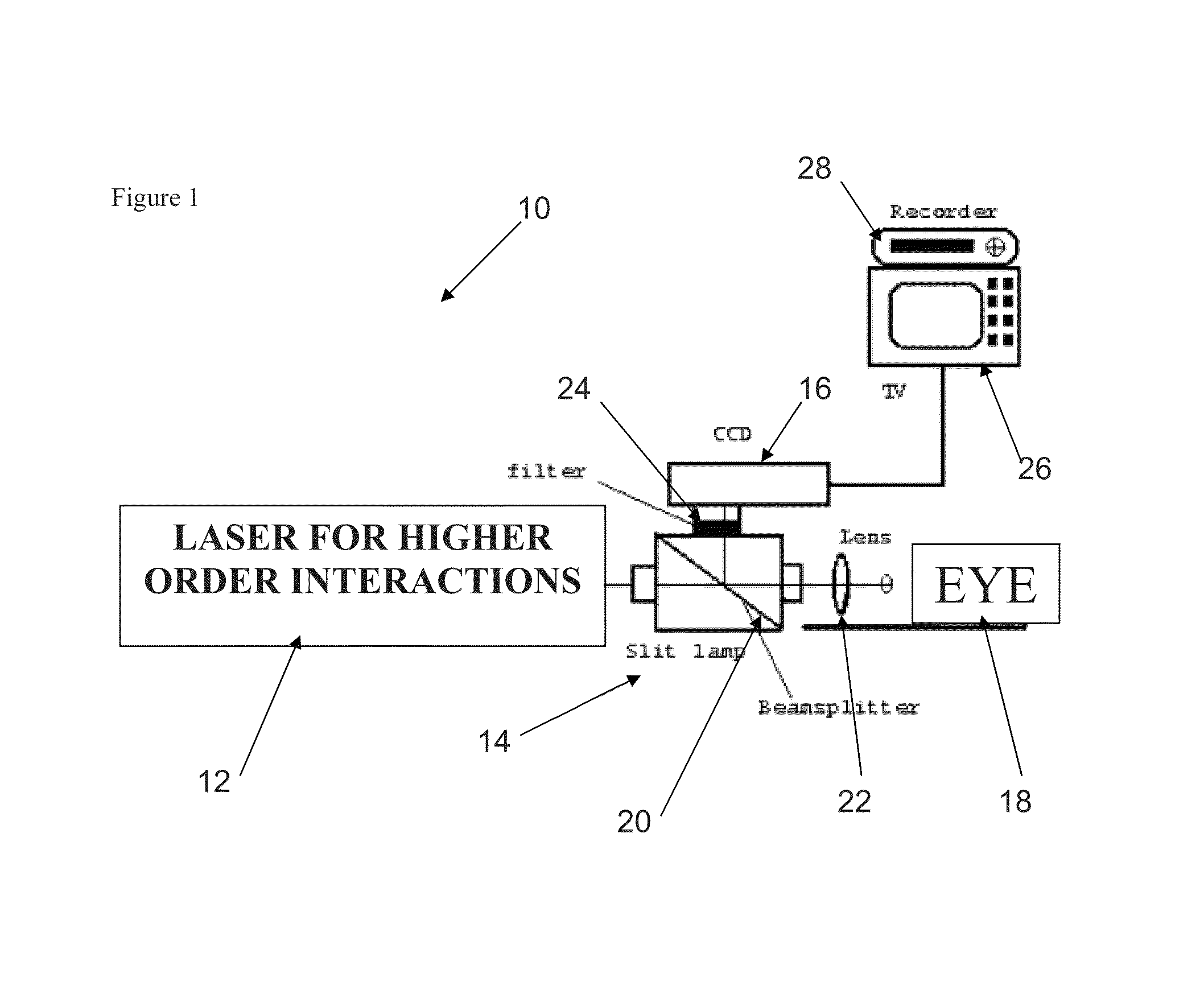Controlled laser treatment for non-invasive tissue alteration, treatment and diagnostics with minimal collateral damage
a non-invasive tissue and laser treatment technology, applied in the field of controlled laser treatment for non-invasive tissue alteration, treatment and diagnostics with minimal collateral damage, can solve the problems of inability to define standard pathology, inability to apply laser methods, and inability to meet the needs of patients, etc., to achieve low collateral damage, high control and precise system, and large fluence
- Summary
- Abstract
- Description
- Claims
- Application Information
AI Technical Summary
Benefits of technology
Problems solved by technology
Method used
Image
Examples
example 1
Gene Transduction with Higher Order Laser Effects
[0075]The device and system of the present invention was tested according to the method of the present invention, for determining the efficacy thereof for gene transduction.
[0076]The objective of these experiments was to assess the possibility of transducing a DNA expression cassette into muscle cells by applying an external laser beam source after naked DNA administration.
Methods
Ultrashort (Femtosecond) Laser Apparatus
[0077]The interaction of the laser beam with the tissue depends on laser power, pulse duration, surface area illuminated, and the depth and the nature of focal parameters of the laser beam at the layer of tissue being targeted. For these experiments, a Coherent Radiation Mira Titanium Saphire mode-locked laser emitting 200 fsec pulses with a 76 MHz repetition rate, was pumped by an argon ion laser (Coherent, Innova 200) that was operated at 12 watts in a multi-line mode. This particular laser is an example of a femtosec...
example 2
Characterization of the Laser Tissue Interaction for AMD Treatment
[0127]The present invention was also tested for the treatment of AMD. The present invention uses a ultrashort laser in which focusing can be used to increase the fluence of the laser in a non-linear fashion to cause multiphoton absorption in a very narrow range around the focal spot which is under the retina and in the RPE where the pigment containing droplets form. The optional but preferred example of such a laser is a femtosecond (for example, 10^-15 sec) laser, as described herein.
[0128]The objective is to cause such multiphoton absorption only in the tissue containing the fluorescent droplets while leaving the surrounding tissue untouched by the effects of the laser beam. Lasers can provide extreme control of such non-linear optical, multiphoton processes for microscopic illumination [T. Wilson and C. J. R. Sheppard, Theory and Practice of Scanning Optical Microscopy (Academic Press, New York 1984]. With such mul...
PUM
| Property | Measurement | Unit |
|---|---|---|
| pulse frequency | aaaaa | aaaaa |
| depth | aaaaa | aaaaa |
| depth | aaaaa | aaaaa |
Abstract
Description
Claims
Application Information
 Login to View More
Login to View More - R&D
- Intellectual Property
- Life Sciences
- Materials
- Tech Scout
- Unparalleled Data Quality
- Higher Quality Content
- 60% Fewer Hallucinations
Browse by: Latest US Patents, China's latest patents, Technical Efficacy Thesaurus, Application Domain, Technology Topic, Popular Technical Reports.
© 2025 PatSnap. All rights reserved.Legal|Privacy policy|Modern Slavery Act Transparency Statement|Sitemap|About US| Contact US: help@patsnap.com



